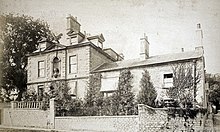
Adela Constantia Mary Walsh was a British born suffragette who worked as a political organiser for the WSPU in Scotland. In 1914 she moved to Australia where she continued her activism and was co-founder of both the Communist Party of Australia and the Australia First Movement.

Aeta Adelaide Lamb was one of the longest serving organizers in the Women's Social and Political Union (WSPU), the leading militant organization campaigning for Women's suffrage in the United Kingdom.

Mary Elizabeth Phillips was an English suffragette, feminist and socialist. She was the longest prison serving suffragette. She worked for Christabel Pankhurst but was sacked; she then worked for Sylvia Pankhurst as Mary Pederson or Mary Paterson. In later life she supported women's and children's organisations.

Mary Blathwayt was a British feminist, suffragette and social reformer. She lived at Eagle House in Somerset. This house became known as the "Suffragette's Rest" and contained a memorial to the protests of 60 suffragists and suffragettes. The memorial was bulldozed in the 1960s.

Jessica "Jessie" Kenney (1887–1985) was an English suffragette who was jailed for assaulting the Prime Minister and Home Secretary in a protest to gain suffrage for women in the UK. Details of a bombing campaign to support their cause were discovered by the authorities in her flat when Kenney was sent abroad to convalesce. She later trained as a wireless operator but worked as a stewardess.

Vera Wentworth was a British suffragette, who notably door-stepped and then assaulted the Prime Minister on two occasions. She was incarcerated for the cause and was force fed, after which she wrote "Three Months in Holloway"

Clara Margaret Codd was a British writer, suffragette, socialist feminist, and theosophist. She went to jail for the suffragettes and then devoted her life to the Theosophical Society.
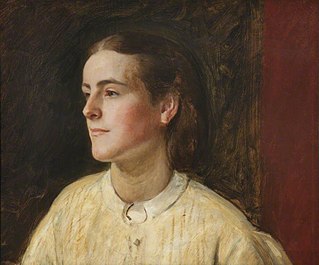
Clara Evelyn Mordan was a British suffragist and benefactor to the Women's Social and Political Union and St Hugh's College, Oxford. Tuberculosis obliged her to fight for women's rights by proxy. She hoped that her "last bed will be a coffin some woman has earned her living by making".
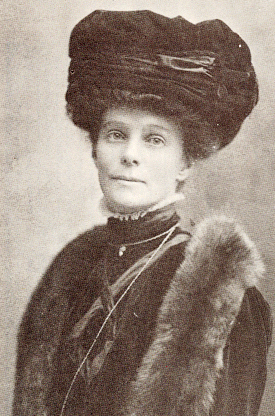
Alice Jane Gray Perkins or Jane Gray Perkins was an American writer and teacher. She was known as a suffragist in the UK as well as in America.

Helen Kirkpatrick Watts was a militant British suffragette from Nottingham.

Florence Eliza Haig (1856–1952) was a Scottish artist and suffragette who was decorated for imprisonments and hunger strikes.

Maud Joachim was a member of the Women's Social and Political Union, one of the groups of suffragettes that fought for women to get the right to vote in the United Kingdom. She was jailed several times for her protests. Joachim was one of the first suffragettes to go on hunger strike when imprisoned, a protest at not being recognised as political prisoners.

Gladice Georgina Keevil was a British suffragette who served as head of the Midlands office of the Women's Social and Political Union between 1908 and 1910.

Emily Marion Blathwayt was a British suffragette and mother of Mary Blathwayt. She and her husband, Linley, a retired Colonel from the Indian Army lived at Eagle House in Somerset and established a welcome and garden summerhouse for women in the movement, that became known as the "Suffragette's Rest".
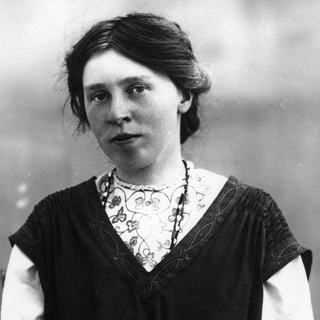
Millicent Louisa Browne, later Millicent Price, was a British suffragette.

Lillian Dove-Willcox (1875–1963) was a British suffragette who was a member of Emmeline Pankhurst's personal bodyguard.
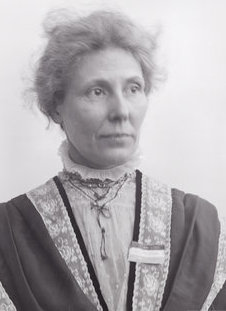
Marie Naylor was a British artist and militant suffragette.
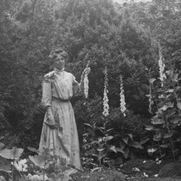
Caroline "Kitty" Kenney (1880–1952) was a sister of Annie Kenney, one of the most well-known British suffragettes to go on hunger strike, for whom the Blathwayts planted commemorative trees in their Eagle House garden in Batheaston, Somerset. Another sister, Jessie, was abroad when her involvement in explosives was discovered by the authorities.

Mary Eva Hastings Morris was a Welsh medical doctor and suffragist. Born in Dolgellau, she grew up in Malta, before returning to Wales to study medicine at the University College of Wales in Aberystwyth. She went on to become the first female doctor from Aberystwyth. After spells working at Great Ormond Street Children's Hospital in London, the North Devon Infirmary, and Bristol Royal Hospital for Sick Children and Women, Morris moved to Bath, where she worked as a medical inspector.

Margaret Hewitt (1800s–1900s) was a British suffragette employed by the Women's Social and Political Union. She was involved in protests in 1909 and arrested. She was chosen to visit the Eagle House aka "Suffragette's Rest" where a plaque commemorated her planting holly bush in the arboretum for leading suffragettes.


